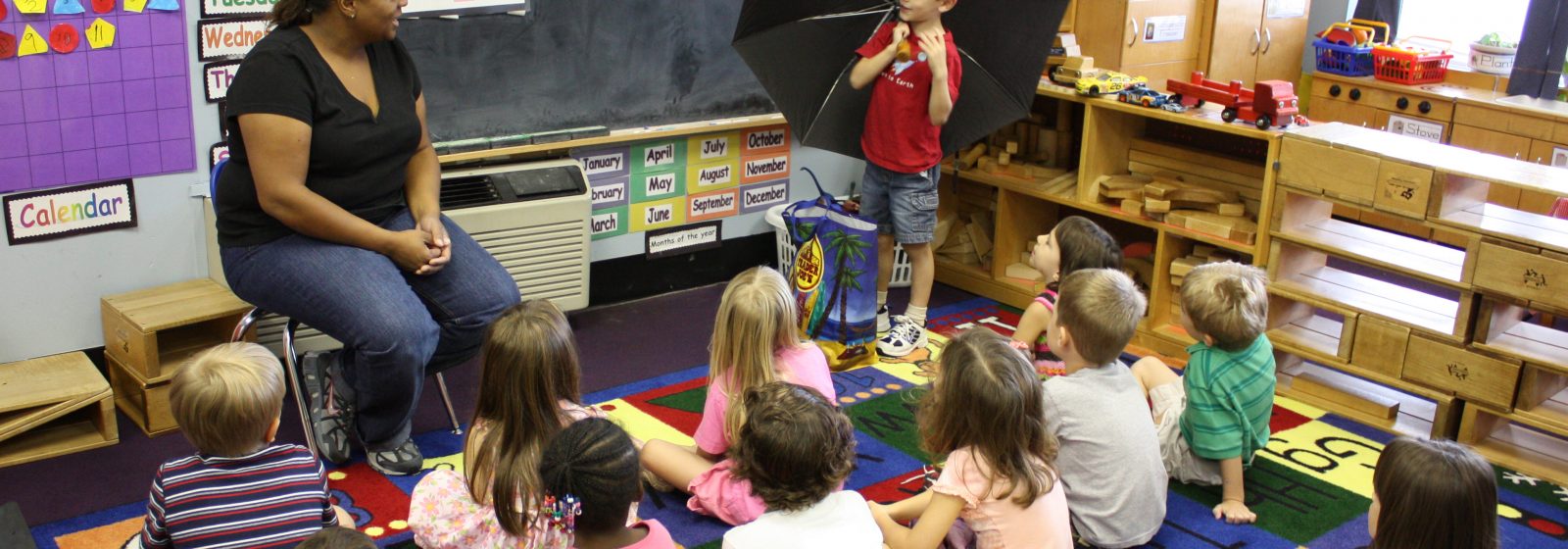Show and Tell: Remove Students’ Crippling Fear of Sharing the Gospel
By Joel Mayward
Remember “show and tell” in kindergarten? You’d bring a favorite object to class, show it to other students, and tell them all about it. Sometimes, if you didn’t have an item to show, you’d just tell people a story about your life or describe a favorite toy or activity. “Show and tell” is a simple way to describe to students how to share our faith in Jesus. We show others our faith in Jesus by demonstrating it in our everyday lives, and we tell others about Jesus as our savior and friend.
In an earlier post, “Good New Sharers,” I proposed that many students want to share about their faith in Jesus, but they don’t know how. We simply need to give them the language and tools to feel confident about sharing their faith, inviting them to embrace their identity as “good news sharers” and “sent ones.”
Why?
Before giving the tools and language, we need to answer a serious question: why? Why do we need to share our faith? Maybe the answer is obvious to you, but you can’t assume students (even those raised in a church setting) will know the answer. Many wonder, Why can’t we just let people decide for themselves what they want to do? We don’t want to interrupt their lives or push our religion on others, right? Here are a few simple and straightforward answers that you can give students.
To follow Jesus’ instruction
It all comes back to our identity as good news sharers and sent ones. If we are followers of Jesus, we need to do what Jesus commands and model his actions. He’s pretty clear with his followers: “Tell people about me.” Jesus calls us to be his messengers, to share about who he is and what he has done. The reality is, without Jesus, we are all lost and broken and our whole life trajectory leads toward death. Jesus invites his followers to be a part of saving the world. And if you’re part of the mission to save the world, it begins to put other things into perspective, like how I spend my time and the urgency of sharing my faith.
We share what we love
We share our faith because we share about what we love. That’s what show and tell is all about, right? If we love something or someone, we can’t stop talking about it or bringing it up. I’m always talking about my wife or my kids in conversation because I love them and they’re always on my mind. I frequently talk about movies because I have a passion for them. I’ve even developed a reputation for loving movies—people naturally ask me about them. What if sharing our faith in Jesus was simply about sharing our love for Jesus? When we grow in our love for Jesus and understand his love for us, talking about Jesus with others becomes natural and joyful. We talk about him the way we’d talk about a friend or a passion.
Not doing God’s work for him
Evangelism is not doing God’s work for him. It’s not like God had to enlist the help of human beings to convince others that he exists and loves the world. He revealed that through Jesus. No, evangelism is God doing his work through us. It is us joining in the work God is already doing in the world. Being a good news sharer requires seeing what God is up to in our community, asking for his help and guidance, and partnering with him as he takes us on this wild journey for our whole lives.
How?
That brings us to the question of how students should share the gospel. Let me offer a few practices to give students the language and tools for evangelism.
Listen
I’m surprised by how many people are open to having a spiritual conversation when we approach them in a humble and gracious way. From my observations and experience, students don’t mind talking about spiritual things and deep life questions when there is someone willing to listen to their ideas. When we are asking people questions and listening to their stories, we want to know where they’re coming from, what they believe, and why they believe it. This listening has to be genuine—you have to actually be curious and excited to hear what someone else believes. You have to listen to their story and want to listen whether or not you have the opportunity to talk about Jesus right then and there.
Talk about Jesus, not Christianity
In my experience, people don’t seem to mind talking about Jesus. People like Jesus. He’s a likeable guy. What does seem to turn people off in conversation is the language of church and Christianity and religion. Students will be skeptical of language that focuses on church or youth group, but many are open to hearing about other students’ relationships and experiences with Jesus—the good and the bad, the joyful and the difficult. Students are inviting people into a relationship with Jesus, not attendance of a specific youth program or church.
Share the gospel as story, not as bullet points
Many of our traditional evangelism techniques and tracts paint the good news of Jesus as an individual transaction that can happen in four easy steps. But the gospel is much bigger than a me-and-God interaction. When we share our own stories—read: “testimonies”—as part of God’s grand story of creation, brokenness, salvation, and healing, the conversation will open up beyond one person’s subjective experience into a discussion of objective reality that affects every single person.
Live the truth
Ultimately, evangelism doesn’t make sense if our lives are not being transformed by the good news of Jesus. If we’re all tell and no show, our message won’t come across as good news. One of the recurring reasons Millennials are leaving the church in college is that they view Christians as hypocrites. That’s not a guilt trip to force students to act perfect (that’s impossible). But it is a push for students to match their message with their actions. They should live lives of humility and service, not criticism and condemnation, to demonstrate the effects of grace in their own lives. Encourage students to follow Jesus and grow deeper in relationship with him, and they’ll find themselves more equipped and open to sharing about their relationship with him.
CC Image courtesy woodleywonderworks on Flickr.
About the Author
Guest Contributor
The LeaderTreks Blog is proud to share the hard-earned wisdom of student ministry leaders from many different backgrounds and professions. From time to time, we will feature guest blog posts from writers other than our regular contributors. We include these posts to provide additional perspectives and insight that we’re sure will help develop you and your ministry… Read More




